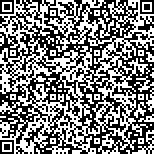本文已被:浏览 616次 下载 535次
投稿时间:2022-05-17 网络发布日期:2023-02-20
投稿时间:2022-05-17 网络发布日期:2023-02-20
中文摘要: 目的 探讨利用剪切波弹性成像(SWE)定量评价健康男性不同膝、踝关节角度对小腿三头肌硬度的影响。方法 收集2021年1月至6月在广东省中医院行健康体检的20名男性健康志愿者纳入研究,在其膝关节完全伸展(0°)或屈曲(90°)下,使用SWE评估在踝关节背屈25°、0°和跖屈50°时肌肉的硬度。结果 膝关节伸展位时在不同踝关节角度下,腓肠肌内侧头(MG)、腓肠肌外侧头(LG)、比目鱼肌(Sol)的硬度显著大于膝屈曲位时的硬度(P<0.05)。当膝关节伸直位时,踝关节背屈角加大,MG和LG硬度也随之增大,但Sol在踝关节0°和背屈25°硬度,差异无统计学意义(P>0.05)。当膝关节屈曲90°时,仅有LG、Sol硬度随着踝关节背屈角度增大而增大(P<0.01)。当膝关节伸直位时,在踝关节跖屈50°与0°,Sol的硬度均大于MG、LG的硬度(P<0.01);而在踝关节背屈25°时,仅有LG和Sol硬度差异有统计学意义(P<0.05)。当膝关节屈曲90°时,仅在踝关节背屈25°处,MG、LG及Sol三者间的硬度差异有统计学意义(P<0.05)。结论 膝、踝关节角度的变化能引起小腿三头肌肌肉硬度的非均匀变化,在使用SWE评估肌肉硬度时应考虑不同关节角度对测量结果的影响。
Abstract:ObjectiveTo evaluate the effect of the knee and ankle joint angles on the stiffness of triceps surae in healthy men by shear wave elastography (SWE). MethodsTwenty male healthy volunteers who underwent physical examination in Guangdong Provincial Hospital of Chinese Medicine from January 2021 to June 2021 were collected. Under the condition of full knee extension (0 °) or flexion (90 °), SWE was used to assess the muscle stiffness at 25° dorsiflexion, 0° and 50° plantar flexion of the ankle. ResultsThe stiffness of medial head of gastrocnemius(MG), lateral head of gastrocnemius(LG) and soleus (Sol) in knee extension position was significantly higher than that in knee flexion position at different ankle angles (P<0.05). When the knee was in the straight position, with the ankle dorsi flexion angle increased, the stiffness of MG and LG increased(P<0.05), but there was no significant difference in the hardness of Sol at 0° and 25° dorsiflexion of ankle (P>0.05). When knee flexion was 90°, only LG and sol stiffness increased with the increase of ankle dorsiflexion angle (P<0.01). When the knee was in the straight position, the hardness of Sol was significantly higher than that of MG and LG at 0° and 50 ° plantar flexion of ankle (P<0.01); when the ankle dorsi flexion was 25°, only the hardness difference between LG and Sol was statistically significant (P<0.05). When knee flexion was 90°, there was significant difference in stiffness among MG, LG and Sol only at 25° dorsal flexion of ankle (P<0.05). ConclusionChanges in the angles of the knee and ankle joints can cause non-uniform changes in the muscle stiffness of the triceps surae. The effect of different joint angles on the measurement results is considered in the assessment of muscle stiffness using SWE.
keywords: Shear wave elastography Triceps surae Stiffness Joint angle Medial head of gastrocnemius Lateral head of gastrocnemius Soleus
文章编号: 中图分类号: 文献标志码:B
基金项目:广东省中医院中医药科学技术研究专项资助(YN2020QN23)
附件
| Author Name | Affiliation |
| YANG Le-ping*, LI Bi-jing, ZHONG Rui, LI Wei-zuo, FENG Si-yi, SUN Peng-tao, ZHAN Jie | |
引用文本:
杨乐平,李碧晶,钟锐,等.剪切波弹性成像评价膝、踝关节不同角度对小腿三头肌硬度的影响[J].中国临床研究,2023,36(2):276-280,285.
杨乐平,李碧晶,钟锐,等.剪切波弹性成像评价膝、踝关节不同角度对小腿三头肌硬度的影响[J].中国临床研究,2023,36(2):276-280,285.
